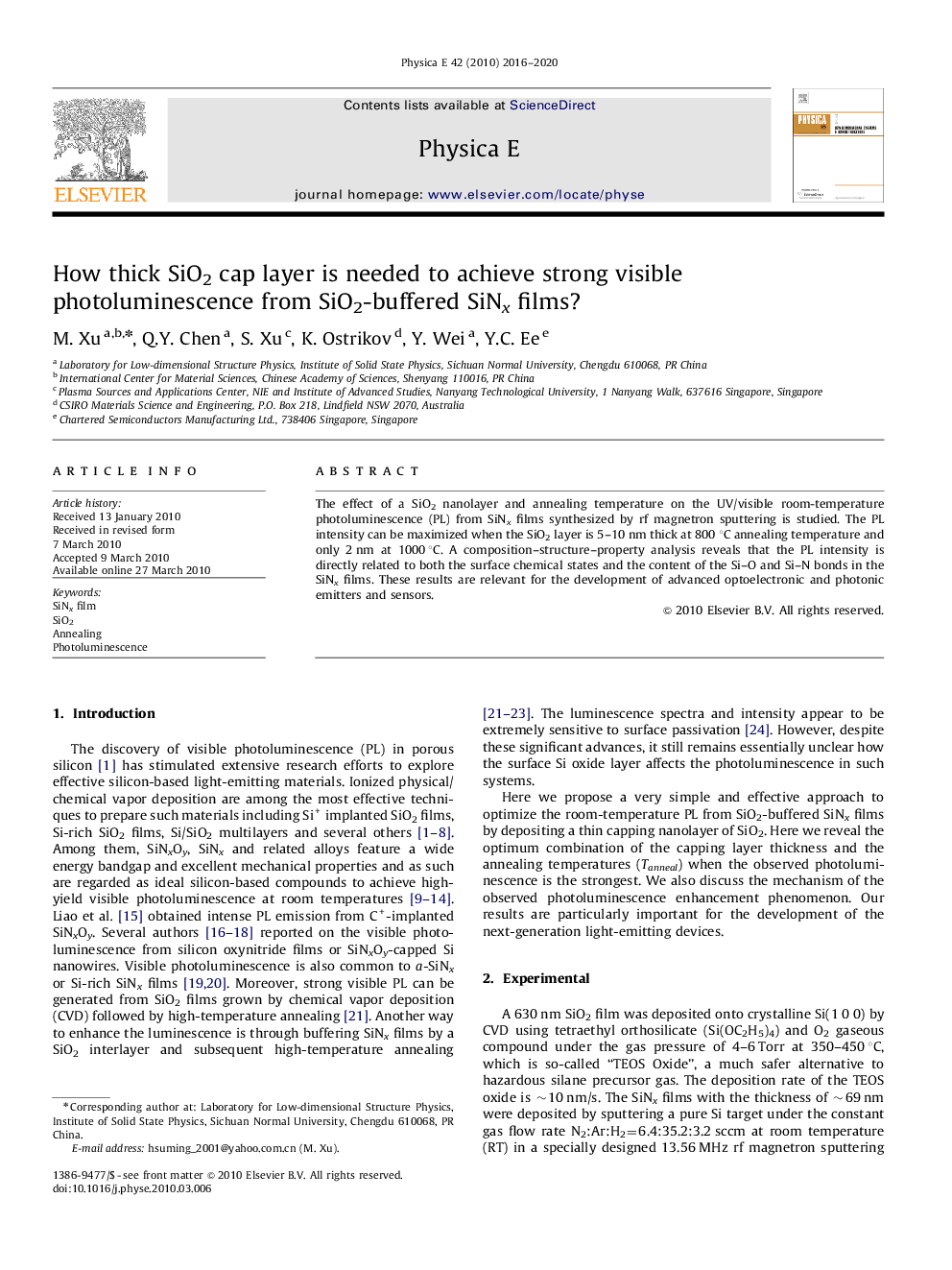| Article ID | Journal | Published Year | Pages | File Type |
|---|---|---|---|---|
| 1545873 | Physica E: Low-dimensional Systems and Nanostructures | 2016 | 5 Pages |
Abstract
The effect of a SiO2 nanolayer and annealing temperature on the UV/visible room-temperature photoluminescence (PL) from SiNx films synthesized by rf magnetron sputtering is studied. The PL intensity can be maximized when the SiO2 layer is 5-10 nm thick at 800 °C annealing temperature and only 2 nm at 1000 °C. A composition-structure-property analysis reveals that the PL intensity is directly related to both the surface chemical states and the content of the Si-O and Si-N bonds in the SiNx films. These results are relevant for the development of advanced optoelectronic and photonic emitters and sensors.
Keywords
Related Topics
Physical Sciences and Engineering
Materials Science
Electronic, Optical and Magnetic Materials
Authors
M. Xu, Q.Y. Chen, S. Xu, K. Ostrikov, Y. Wei, Y.C. Ee,
